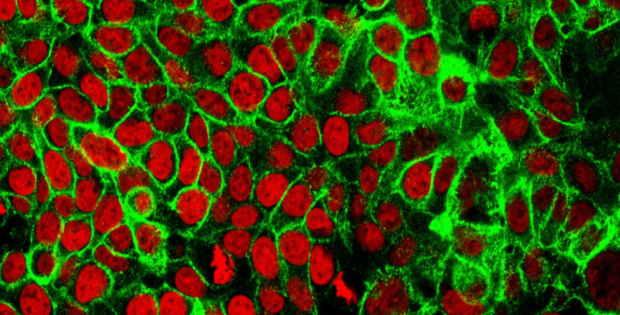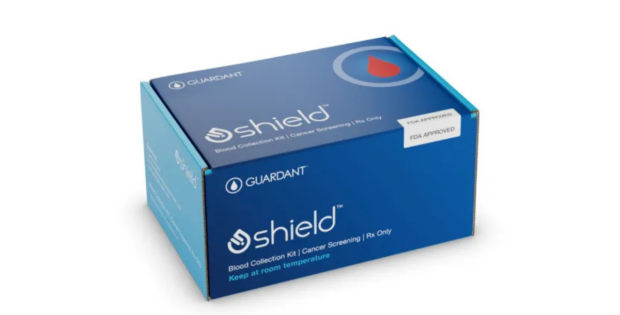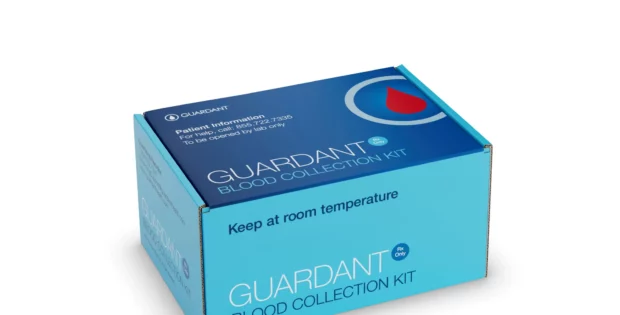Why This Message Motivates for Colorectal Cancer Screening

In the book Switch: How to Change Things When Change is Hard by the Heath brothers, the authors share a story about the St. Lucia Parrot that only exists on the island of St. Lucia.
This population of parrots was in grave danger of becoming extinct. The primary causes of its decline were destruction of its forest habitat, being captured as pets, and hunting. In the mid-1970’s it was observed that there were only an estimated 150 birds left in the wild. One biologist said the St. Lucia Parrot “could not escape oblivion by the year 2000”1. The Forest and Lands department began to educate the people of St. Lucia on the importance of protecting the parrot.
They learned early that facts alone would not help the situation
That’s when a 21-year-old conservation adviser brimming with fresh ideas and a new message joined the team. He knew that using an analytical case for saving the bird wouldn’t resonate with the St. Lucians. Facts and figures laying out the stark reality were not enough to engage them, and he refused to generate another report showing that the parrot was going extinct. This situation required the adviser to craft an emotional case. He needed to get St. Lucians behind saving a parrot that most of them took for granted (and some of them ate).
They needed a message that would motivate change
They needed a message that would endear the St. Lucians to the parrot and make them want to protect it as if it were their own. The adviser went to work with the goal of convincing St. Lucians that they were the kind of people who protect their own. In 1978 the Forest and Lands department launched its public awareness campaign teaching the islanders in schools, churches, government, community groups, farming fields, and industry about their rare and special parrot.
It was as if a switch had been flipped
In 1979, St. Lucia gained its independence from the United Kingdom and because of the public awareness campaign, the parrot was officially designated as the national bird prompting the government to establish a parrot reserve and to ban hunting.
The message that stuck was, “This is our parrot and there’s no other like it in the world.” It worked. In the end, the locals would come to embrace the parrot as a part of their national identity.
You can see why the switch happened and the people of St. Lucia changed, can’t you?
The switch occurred because the message used to motivate change was based on identity. It is often said that the key to behavior change is identity change. The people of St. Lucia came to identify themselves as protectors of the parrot, one of their own (identity). With that identity change came an interest from the people in learning how they could support change around the issues that were negatively affecting the parrot. And there it is, a switch in behavior, positive change.

There’s science behind this
Behavioral science describes the study of human behavior through the use of systematic experimentation and observation. Self Determination Theory (SDT), a framework used in behavioral science, is widely applied in areas of politics, economics, and community and public health. One of the defining features of SDT is its treatment of both the person (i.e., personality) and the situation (i.e., the social context) in motivated behavior2. Examples of SDT motivation around healthcare are exercising because you value the health benefits or getting regular check-ups, screenings, and wellness care because you value living a longer life with loved ones.
This is the switch that we’re aiming for in colorectal cancer screening
Public health scientists, clinicians, advocacy groups, and partners in industry are working together to gain a deeper understanding of the barriers to screening, healthcare behaviors and perceptions and to uncover different motivators to colorectal cancer screening (CRC).
CRC is the second-leading cause of cancer-related death in the U.S.3 Regular screening for CRC has been shown to improve survival rates, yet one in three adults have not completed the recommended CRC screening. Strides have been made to increase screening participation in eligible individuals with screening rates in the United States sitting around 67%4,5
The 80% in Every Community is a National Colorectal Cancer Roundtable (NCCRT) initiative in which more than 1,800 organizations are working toward the shared goal of reaching CRC screening rates of 80% and higher in communities across the nation.

The NCCRT’s newly released 2022 Messaging Guidebook for Black & African American People: Messages to Motivate for Colorectal Cancer Screening highlights new market research focused on identifying barriers to CRC screening, understanding preferred and trusted sources for receiving healthcare information, and research-tested messages to help encourage unscreened Black and African American people to seek CRC screening.
Black and African American people experience disproportionately high incidence and mortality rates from CRC, with CRC death rates almost 40% higher than those of white people. While screening is only one element of the work to address these CRC disparities, it is essential to promote screening in the best way possible. This new guidebook is intended to provide recommendations to enhance marketing and communication efforts while providing tools to strengthen communication campaigns that resonate with Black and African American communities6
Applying identity-based decision making in colorectal cancer screening messages
The NCCRT researchers began by conducting unbranded online surveys and 60-minute virtual interviews to understand perceptions and attitudes around personal health in general, and barriers to CRC screening in Black and African American people who are 45+ years and are unscreened. They learned that many unscreened Black and African American individuals are focused on maintaining their health and know what they need to do to stay healthy, including seeing a doctor for regular check-ups. The responses in Figure 1 below inform the NCCRT team when developing their messages. And as you can see from the column labeled, Perceptions about Their Own Health, 87% say they care a great deal about maintaining their health.

Equipped with this understanding of perceptions, attitudes, and barriers to CRC screening the NCCRT team can craft messages that motivate the unscreened to make a new choice and get screened. Research suggests that when people make choices, they tend to rely on one of two models, the consequences model or the identity model1. An example of how we make decisions using the consequences model is by weighing the costs and benefits and then making our choice based on whichever provides the greatest amount of satisfaction. The consequences model is a rational, analytical way of making decisions.
In the identity model of decision making, we ask ourselves three questions when we have a decision to make, Who am I? What kind of situation is this? What would someone like me do in this situation?
Using identity-based messaging to drive behavior change
You may recall that the team leading the efforts to save the St. Lucia Parrot decided against using a consequences approach. They opted to use an emotional case based on identity for their public awareness campaign, and it was effective. The NCCRT is also using identity-based approach to messaging aimed at driving behavior changes in Black and African American people who are unscreened for CRC. They identified the top 4 out of 15 messages to be the most effective at motivating this group of people to get screened. See Figure 2 below for the #1 most preferred screening message in this group and then we’ll discuss why it works.

The #1 most preferred message works because…
The NCCRT Guidebook states that this message is compelling because it is extremely relatable and sheds light on a widely unknown statistic for Black and African American people. Many unscreened people think of suffering, discomfort, and lower rates of survival when asked about CRC. Using this tailored message can help to highlight that CRC can be preventable or more easily treated if caught early through screening.
Who Most Responds to This Message
The Guidebook explains that by and large, the #1 preferred message was ranked as the most motivating screening message across all in-focus groups, including the two groups with the lowest likelihood to get screened: people who feel impervious and people with cost concerns.
What People Said
“It was relatable. I’m Black and it talked about Blacks having a high rate of colorectal cancer and that we should get tested.”
We’ve learned a lot and there is still much to learn. The guide is full of insightful information, and will no doubt serve as a helpful tool and ongoing reference as we all try to use more effective and tailored screening messaging to reach the Black and African American community in meaningful ways.
Recommended Stories


